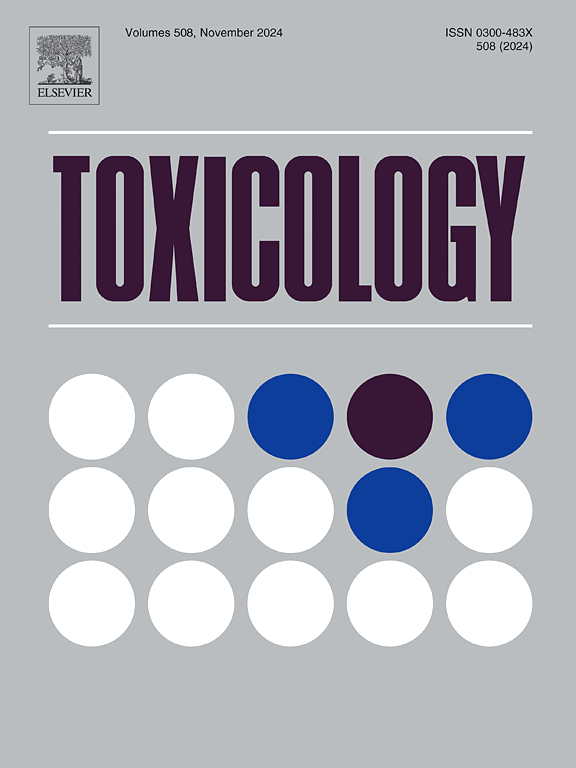新一代风险评估和设计化学品和材料的安全和可持续的新方法:职业健康的观点和挑战。
IF 4.6
3区 医学
Q1 PHARMACOLOGY & PHARMACY
引用次数: 0
摘要
欧洲正面临日益严峻的健康和福祉威胁,包括化学污染、气候变化和生物多样性丧失。为了应对这些威胁,欧盟制定了一系列政策战略,包括可持续化学品战略和零污染行动计划,其中指出了对安全和可持续设计(SSbD)化学品/材料的需求。SSbD和“零污染”的目标将不可避免地导致在一般生活环境和工作场所接触化学品的条件发生变化,因此需要从危害评估和风险表征开始,充分预测和管理化学品风险。其中,下一代风险评估(NGRA)被定义为一种与人类相关、暴露主导、假设驱动的风险评估方法,旨在预防危害。迄今为止,NGRA的应用仅限于化妆品的使用评估,尚未在职业风险评估中实施。职业安全评估是一个将受益于NGRA在安全决策中的应用的领域。此外,新方法方法(NAMs)的应用可以支持生成对实施SSbD框架的操作有用的数据,有利于采用合适的管理策略。反过来,历史上对工人健康和安全采取的职业预防和保护措施,可为在职业背景下充分实施国家gra提供支持。因此,本工作旨在概述主要可用的namas及其对职业化学品风险评估和管理的可能影响。本文章由计算机程序翻译,如有差异,请以英文原文为准。
Next generation risk assessment and new approach methodologies for safe and sustainable by design chemicals and materials: Perspectives and challenges for occupational health
Europe is facing increasingly challenging threats to health and well-being, including chemical pollution, climate change, and biodiversity loss. To counter such threats, the European Union has developed a series of policy strategies, including the Chemicals Strategy for Sustainability and the Zero Pollution Action Plan that pointed out the need for safe-and-sustainable-by-design (SSbD) chemicals/materials. The SSbD and the “zero pollution” ambition will inevitably lead to a transformation of the conditions of exposure to chemicals both in general living environments and workplaces with the consequent need to adequately anticipate and manage the chemical risk, starting from the assessment of the hazard and risk characterization. Among those, next generation risk assessment (NGRA) is defined as a human-relevant, exposure-led, hypothesis driven risk assessment approach, designed to prevent harm. To date, application of NGRA has been restricted to assessing the use of cosmetics, and it has not been implemented in occupational risk assessment. Occupational safety assessment represents an area that would benefit from increasing application of NGRA to safety decision making. Additionally, the application of new approach methodologies (NAMs) can support the generation of data useful to implement the operationalization of the SSbD framework, favorably impacting the adoption of suitable management strategies. In turn, the historical occupational preventive and protective approach to the health and safety of workers may provide support to adequately implement NGRA in the occupational context. Therefore, this work aims to provide an overview on the principal available NAMs and their possible implications for occupational chemical risk assessment and management.
求助全文
通过发布文献求助,成功后即可免费获取论文全文。
去求助
来源期刊

Toxicology
医学-毒理学
CiteScore
7.80
自引率
4.40%
发文量
222
审稿时长
23 days
期刊介绍:
Toxicology is an international, peer-reviewed journal that publishes only the highest quality original scientific research and critical reviews describing hypothesis-based investigations into mechanisms of toxicity associated with exposures to xenobiotic chemicals, particularly as it relates to human health. In this respect "mechanisms" is defined on both the macro (e.g. physiological, biological, kinetic, species, sex, etc.) and molecular (genomic, transcriptomic, metabolic, etc.) scale. Emphasis is placed on findings that identify novel hazards and that can be extrapolated to exposures and mechanisms that are relevant to estimating human risk. Toxicology also publishes brief communications, personal commentaries and opinion articles, as well as concise expert reviews on contemporary topics. All research and review articles published in Toxicology are subject to rigorous peer review. Authors are asked to contact the Editor-in-Chief prior to submitting review articles or commentaries for consideration for publication in Toxicology.
 求助内容:
求助内容: 应助结果提醒方式:
应助结果提醒方式:


